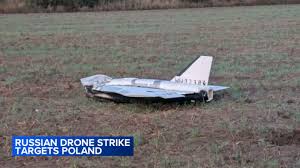NATO’s Response to Russian Drones in Poland

Introduction
The rising tensions between NATO and Russia have intensified, particularly following the deployment of Russian drones near Poland’s borders. This situation holds significant importance as it could impact regional security and NATO’s collective defence strategies. Given Poland’s strategic location as a NATO member, the developments in drone warfare and airspace management raise critical questions regarding the military preparedness of the alliance.
Recent Developments
In the last few months, there have been increasing reports of Russian drones being detected within close proximity to Polish airspace. These incidents have sparked concern among NATO officials, prompting discussions on enhancing aerial surveillance and defence measures within the region. The Polish military has reported several instances where unmanned aerial vehicles (UAVs) were tracked, with some crossing into Polish territory, leading to immediate alerts and precautionary responses.
NATO Secretary-General Jens Stoltenberg stated, “We are closely monitoring the situation in Poland and elsewhere along the eastern flank. Our commitment to collective defence remains unwavering, and we will ensure that our allies, including Poland, are secure against any aerial threats.” This statement highlights NATO’s proactive stance in the face of potential aggression and indicates a commitment to fortifying military installations and air defence systems in Eastern Europe.
Poland’s Military Preparedness
In light of the recent drone activity, Poland has taken steps to bolster its military capabilities. The government has increased its budget for the Polish Armed Forces, focusing on modernising its air defence system. Additionally, collaboration with NATO allies has been strengthened, particularly in intelligence-sharing and defence planning to mitigate any threats posed by hostile drone operations.
Polish Defence Minister Mariusz Błaszczak remarked, “We are enhancing our air defence not only to protect our borders but also to ensure the security of our NATO allies. The proliferation of drone technology is a game-changer in modern warfare, and we must adapt accordingly.” Such statements reflect Poland’s commitment to maintaining a robust defensive posture in the face of evolving threats.
Conclusion
The ongoing tensions surrounding NATO and Russian drones in Poland underline the precarious nature of the current geopolitical landscape. As drone technology evolves, so too does the nature of warfare and defence strategies. Ensuring a coordinated response among NATO allies is crucial in safeguarding against potential escalations resulting from drone incursions into Polish airspace. Moving forward, it will be essential for NATO to adapt its strategies to contend with the challenges posed by aerial warfare, ensuring that member states remain united and secure.
